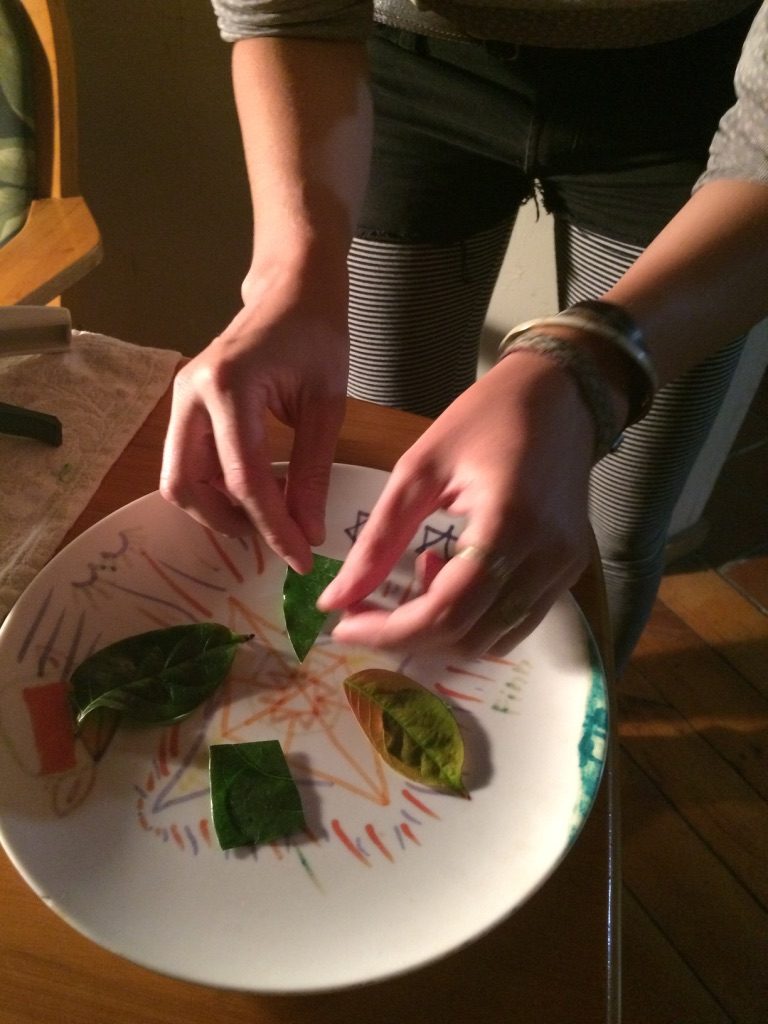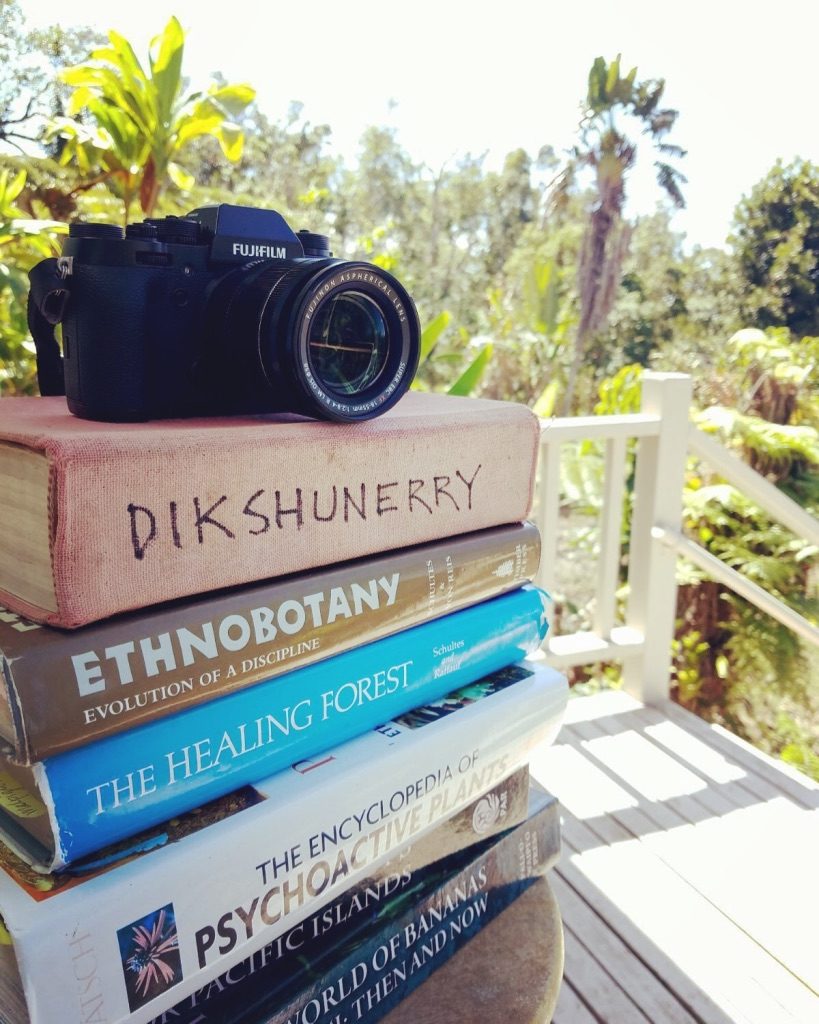Is a science-art collaboration between a visual artist/electron microscopist, an ethnobotanist and a landscape architect. The project revolves around plant physiology, ethnobotany, climate research and ecosystem restoration. The aim is a touring photographic (micrographic) exhibition, a book and an avenue for cross disciplinary conversation about these important topics.
Our field work is now completed and we have entered the research and imaging stage! We made a short video about our time in the field, on the slope of a volcano in the Big Island of Hawaii, where we were working with the plants and the landscape, collecting samples and ethnobotanical stories, as well as getting a feel for the ecosystems where the selected specimen plants thrive.
Whilst in the field we also produced a field work journal, which you can gain access to by hitting the button below. More chapters will follow as we progress through the research and imaging work.
This is a short interview that I made when I visited Kathleen and the Botanical Dimensions for the first time, in 2017. Here she is describing the place and her vision.
In the Autumn of 2017 I was introduced to ethnobotanist Kathleen Harrison and her fantastic project Botanical Dimensions, a living library of culturally significant plants from all over the world. Kathleen has collected, propagated and planted hundreds of species in her 13 acre property on the slopes of a volcano in Hawaii over the last four decades.
In the months prior to my meeting with Kathleen I had begun to obsess over stomata – the tiny little “breathing mechanisms” of plants, through which the plant “inhales” the air that we are exhaling, using the CO2 to create O2 (and carbohydrates). This way we keep breathing back and forth – the plants and us animals – eternally linked through this cycle. The point of connection being this little organ on the leaf of the plant.
To me it is a fascinating concept on many levels and upon investigating I found that there are currently some rather interesting climate research being undertaken, where Dr Margret Steinthorsdottir and her team at the Museum of Natural History in Stockholm, are investigating paleontological stomata samples and comparing with samples from living specimens. This allows her to estimate the levels of CO2 present in the atmosphere in the distant past. This information can give us a better idea of what is going on with our climate today.

In short; I found stomata to be a generally intriguing topic and me, being a scientific photographer and science communicator, of course embarked upon a journey to try to image these little plant parts in order to share my fascination with all of you guys. I developed methods that I thought might work. Failed and tried again.
Eventually I came up with a solution that seemed viable. It was around the time that my path crossed with Kathleen’s. The opportunity arose to come and try out the method at her place in Hawaii. I only had one afternoon on location but I did get a couple of samples and it sure did work.
Upon visiting the Botanical Dimensions, in the spring of 2018, it dawned on me how outrageously fascinating it would be to make the exhibition using plant samples collected in this unique garden. Here are plants that human cultures all around the world have used for a range of purposes throughout the ages. The images will not only contain the – already exciting and intriguing – physiological and scientific element that had originally sparked my interest, but would be enriched with a layer of mythology, ancient wisdom and culturally transcendental information from our distant ancestors world wide.

Now Kathleen has invited me back to spend a few months with her in her garden, this coming winter, collecting samples, going through her archives with scientific information and indigenous stories related to each plant.
My plan is to collect 21 samples of carefully selected species. From the samples I will make scanning electron microscope images of the stomata of each plant. These images will form the foundation for a touring exhibition of giant micrograph prints and a book on the topic of plant physiology, ethnobotany and climate research.
Last but not least; check out the gallery below where you will find the first two STOMATA images that I made from samples I collected during my brief visit to Botanical Dimensions in the spring of 2018.